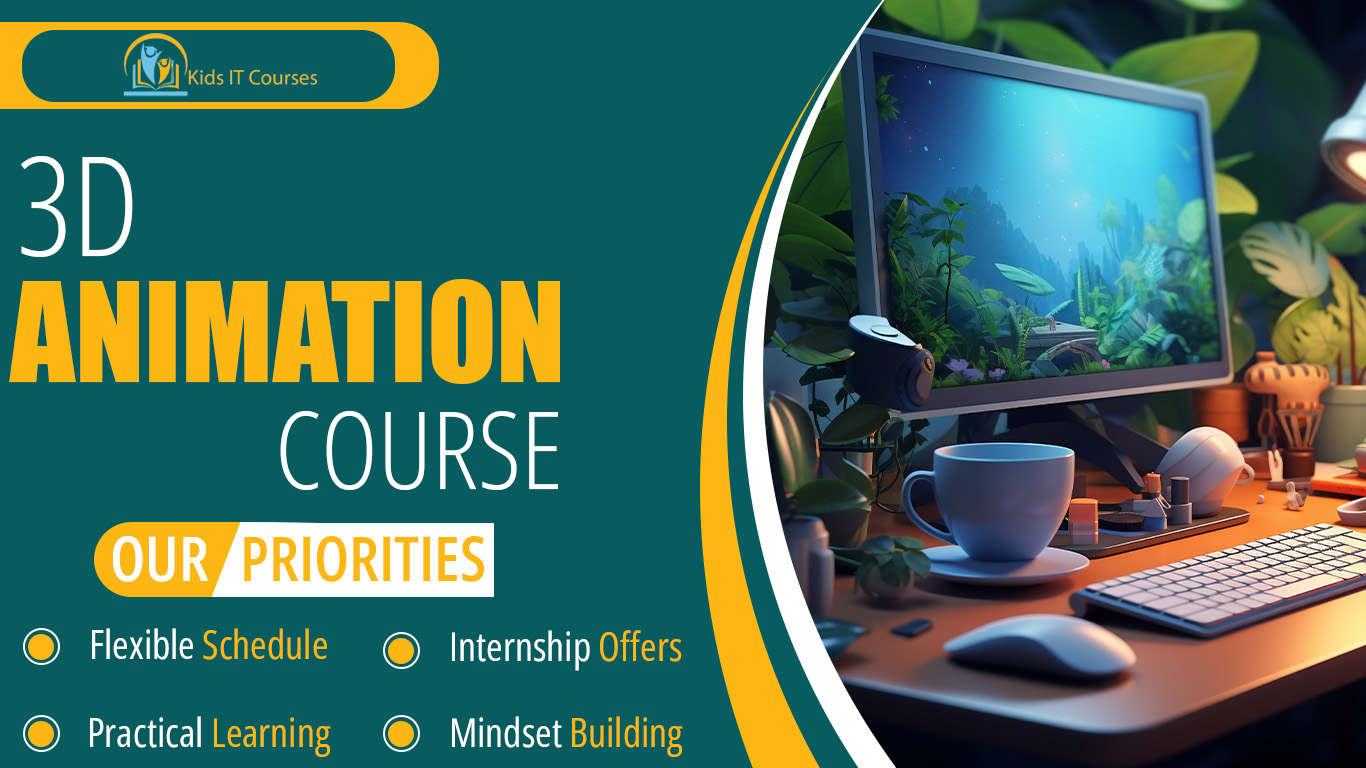
3D Animation Course for Kids
- Through this vibrant course, kids dive into the creative universe of 3D Animation where they bring characters, objects, and entire worlds to life using digital tools.
- The journey includes storytelling, designing, and animating—all while having a blast!
Definition
• Kids learn how to create characters and make them move. It’s like making your own cartoon or movie!
• They build objects that look real using computer tools. It helps them understand shapes, space, and design.
• Kids can design their own stories, worlds, and characters. It’s a fun way to bring their ideas to life.
• They learn simple tools like Blender or Tinkercad. This gives them hands-on experience with real tech.
• Creating 3D animation takes steps and patience. It helps kids stay organized and think carefully.
•Animation is used in films, games, and ads. Learning it early opens doors to creative careers.
Importance
• Kids learn how 3D characters and scenes are created. It makes them excited to explore behind-the-scenes of animation.
• They imagine stories, characters, and movements. This grows their creativity and storytelling skills.
• Kids use animation software to design and move objects. It gives them hands-on tech experience in a fun way.
• They learn to fix errors, time movements, and adjust designs. This sharpens their thinking and patience.
• Creating smooth animations teaches kids to focus carefully. They learn how small changes make a big difference.
• Kids can tell their stories using visuals and sound. It helps them express ideas without needing many words.
Advantages for Freelancing Purpose
• Kids learn how 3D characters move and talk on screen. It’s like creating their own animated world!
• They use easy tools to draw, model, and animate. This gives them hands-on experience with digital art.
• Animation takes patience and step-by-step thinking. It helps kids stay focused and solve little challenges.
• They create their own characters, scenes, and stories. It lets their ideas come to life on screen.
• When they watch their own animations move, they feel proud. It encourages them to keep learning and creating.
• 3D animation is used in games, movies, and apps. This course gives kids a fun head start in digital media jobs.
Session 1 : Introduction to Animation
What is animation? 2D vs 3D
Where we see animation (games, movies, etc.)
Overview of 3D animation tools (TinkerCAD, Blender, or Scratch 3D)
Exploring the workspace and interface
Session 2 : 3D Modeling Basics
Understanding objects, shapes, and dimensions
Creating and combining basic 3D shapes
Designing your first 3D character or object
Saving and exporting 3D models
Session 3 : Character Creation
Designing characters with simple geometry
Using symmetry and proportions
Adding basic features (eyes, mouth, accessories)
Character walk-through: pose and setup
Session 4 : Introduction to Animation
What is keyframe animation?
Creating movement with frames
Make your character move, wave, or bounce
Animate simple objects: ball bounce or flying rocket
Session 5 : Camera, Lighting & Effects
Basics of camera angles in animation
Adding lighting and background to scenes
Rendering a short animated scene
Exporting your animation for sharing
Session 6 : Final Project Week
Plan and storyboard a short 3D animation
Build, animate, and polish your final project
Present your animated scene to the class
Receive feedback and a digital certificate
✅ Bonus Topics (Optional):
Intro to stop-motion animation
Using sound in animations
Animation career paths and freelancing basics
Exploring animation in games
